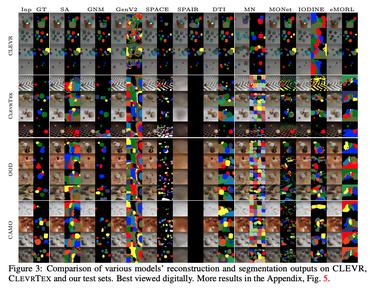Unsupervised Image Decomposition with Phase-Correlation Networks
The ability to decompose scenes into their object components is a desired property for autonomous agents, allowing them to reason and act in their surroundings. Recently, different methods have been proposed to learn object-centric representations from data in an unsupervised manner. These methods often rely on latent representations learned by deep neural networks, hence requiring high computational costs and large amounts of curated data. Such models are also difficult to interpret. To address these challenges, we propose the Phase-Correlation Decomposition Network (PCDNet), a novel model that decomposes a scene into its object components, which are represented as transformed versions of a set of learned object prototypes. The core building block in PCDNet is the Phase-Correlation Cell (PC Cell), which exploits the frequency-domain representation of the images in order to estimate the transformation between an object prototype and its transformed version in the image. In our experiments, we show how PCDNet outperforms state-of-the-art methods for unsupervised object discovery and segmentation on simple benchmark datasets and on more challenging data, while using a small number of learnable parameters and being fully interpretable.
PDF Abstract


